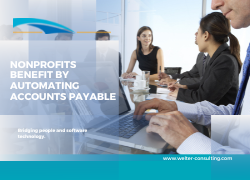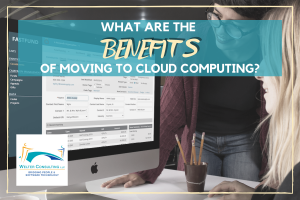
The IRS often relies upon an accountant’s discretion when choosing how to classify income and expenses. One area that merits further attention is the distinction between advertisements and sponsorships. Are these classified as expenses, gifts, or neither?
The areas we will examine include IRS 513(c) Advertising and IRS 513(i) Qualified Sponsorship Payments, as well as Treasury Regulation 1.513-4 (Certain sponsorship not unrelated trade or business). Taking all three releases into consideration, accountants can develop clear, unambiguous guidelines for their organizations on how to classify activities.
Advertisements vs. Sponsorship: The Main Differences
Most people believe they know what an advertisement is—after all, we’re bombarded with ads from the moment we wake up and switch on the internet, radio, or television to the time we go to bed. But, when it comes to advertising and sponsorships, the distinction may not be as easily recognized.
The IRS, “Rev. Rul. 67-246 holds that where a transaction involving a payment is in the form of a purchase of an item of value (advertising), the presumption is that no gift has been made.”
Therefore, paid advertisements or sponsorships do not qualify as a gift.
The issue arose when corporations began giving substantial gifts to nonprofits. In one case shared on the IRS website, a corporation gave land to a nonprofit to build a historic village replica. Because the corporation donated the land and benefited significantly from the advertising placed around the village owned by the nonprofit, it was considered advertising for the corporation, rather than a sponsorship.
Other areas where the IRS has clearly defined advertising examples (rather than sponsorships) include:
- When the payment amount is based on attendance or circulation figures—both are examples of advertising. Newspapers, magazines, websites, radio and television stations, for example, base their rates on the circulation or audience. Hence, any promotional space or airtime “given” by the corporation owning these media outlets is considered advertisement, not a sponsorship.
- A payment which entitles the payor to the use or acknowledgement of its name or logo in printed material published by or on behalf of the exempt organization that is not related to a specific event conducted by the exempt organization; or
- Payments made in connection with any qualified trade show activity. (IRC Sec. 513(d)(3)(B)).
In these examples, the revenue stream should be considered advertising income and taxed as unrelated business income.
One caveat: a simple acknowledgement of a corporation does not constitute advertising revenue. Putting a sponsor’s logo or URL in an event program, without any promotional text around it, is not advertising. Announcing the sponsoring company and urging event attendees to patronize that company is considered an advertisement. Think of it this way: a simple logo or URL is not advertisement, but anything added to it verbally or in writing extolling people to buy, visit, or take an action would be considered an advertisement. It’s a fine line, but one that’s clear once it’s understood in context.
Action Steps
If you’re concerned that some of your organization’s activities may be misclassified, sit down with your accounting team and review contracts, documents, and supporting materials. Use the rubric provided by the IRS to evaluate activities and, if necessary, revise their classification to ensure transparency, accuracy, and adherence to accounting best practices.
Welter Consulting
Welter Consulting bridges people and technology together for effective solutions for nonprofit organizations. We offer software and services that can help you with your accounting needs. Please contact Welter Consulting at 206-605-3113 for more information.







Recent Comments